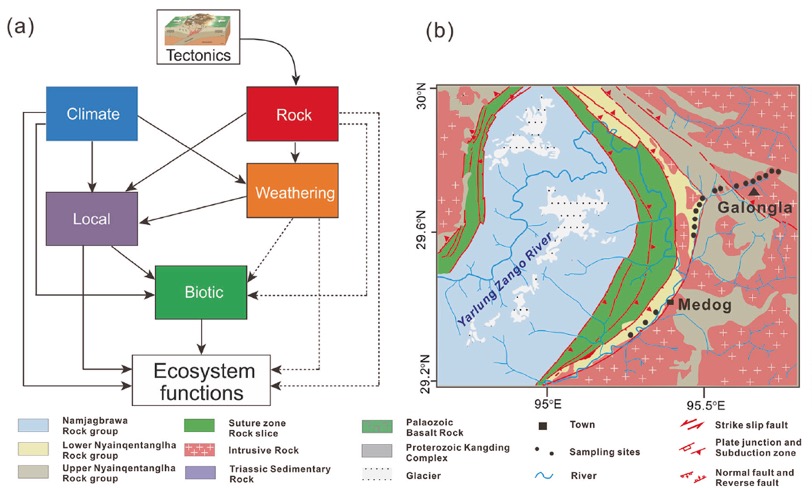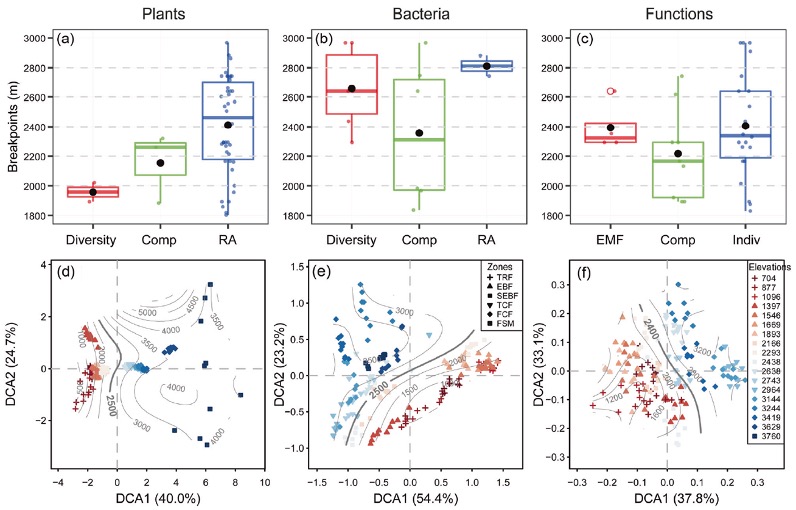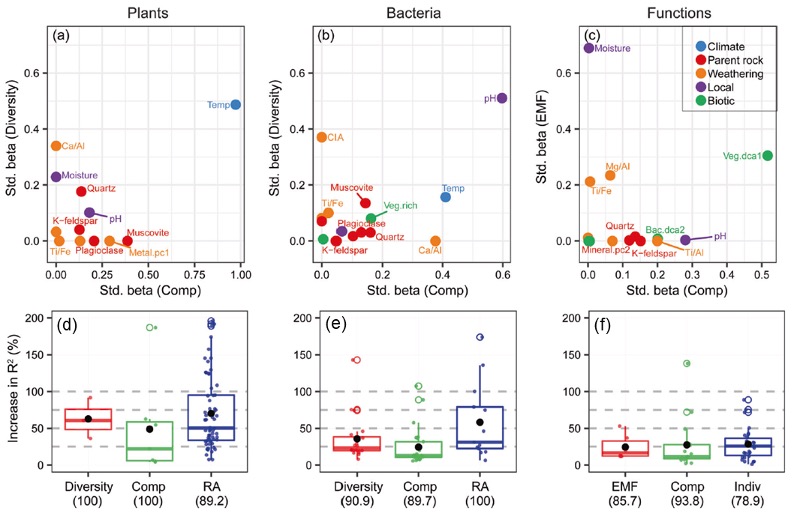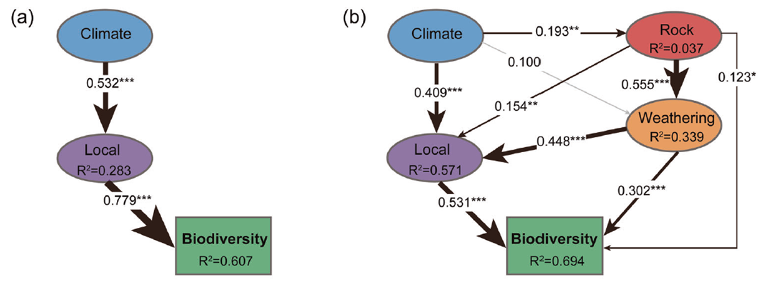| News |
| Latest news | |
| Int’l Cooperation activities | |
| Events & Announcement | |
| Recent Activities |
| Location: Home>News>Recent Activities |
| ISME: Mountain biodiversity and ecosystem functions: interplay between geology and contemporary environments |
Although biodiversity and ecosystem functions are strongly shaped by contemporary environments, such as climate, local biotic and abiotic attributes, we know relatively little about how they change along with long-term geological processes. Here, along a 3000-m elevational gradient with tectonic faults on the Tibetan Plateau (that is, Galongla Mountain in Medog County, China) (Fig.1b), the researchers of Institute of Tibetan Plateau Research, Chinese Academy of Sciences studied the joint effects of geological and contemporary environments on biological communities, including the diversity and community composition of plants and soil bacteria, and ecosystem functions. They found that these biological communities and ecosystem functions generally showed consistent elevational breakpoints at 2000-2800 m (Fig.2a-c). Mean annual temperature, soil pH and moisture were the primary contemporary determinants of biodiversity and ecosystem functions (Fig.3a-c), which supports previous findings. However, compared with the models excluding geological processes, inclusion of geological effects, taking parent rock and weathering for examples, increased 67.9 and 35.9% of the explained variations in plant and bacterial communities (Fig.3d, e), respectively. Such inclusion increased 27.6% of the explained variations in ecosystem functions (Fig.3f). The geological processes thus provided additional links to ecosystem properties, which were prominent but showed divergent effects on biodiversity and ecosystem functions: parent rock and weathering exerted considerable direct effects on biodiversity (Fig.4b), whereas indirectly influenced ecosystem functions via interactions with biodiversity and contemporary environments. Thus, the integration of geological processes with environmental gradients could enhance our understanding of biodiversity and ecosystem functioning across different climatic zones. Further studies are encouraged to study the legacies of past geological events on biological communities and ecosystem functions, involving sampling along multiple elevational transects across faults and considering further more taxonomic groups with fine-resolution analytical approaches.  Fig. 1 Hypothesized mechanisms for biological communities and ecosystem functions (a), and sampling maps (b).  Fig. 2 Elevational patterns of plants, bacteria, and ecosystem functions. The boxplots of elevational breakpoints and DCA analyses on plants (a, d) and bacteria (b, e), and ecosystem functions (c, f).  Fig. 3 Relative importance of contemporary and geological processes on plants (a), bacteria (b) and ecosystem functions (c). The increasing explained variances on plant (g) and bacterial (h) communities and ecosystem functions (i) by including geological processes.  Fig. 4 Structural equation models of biodiversity by excluding (a) or including (b) geological variables. Contact HE Xia hexia@itpcas.ac.cn |
